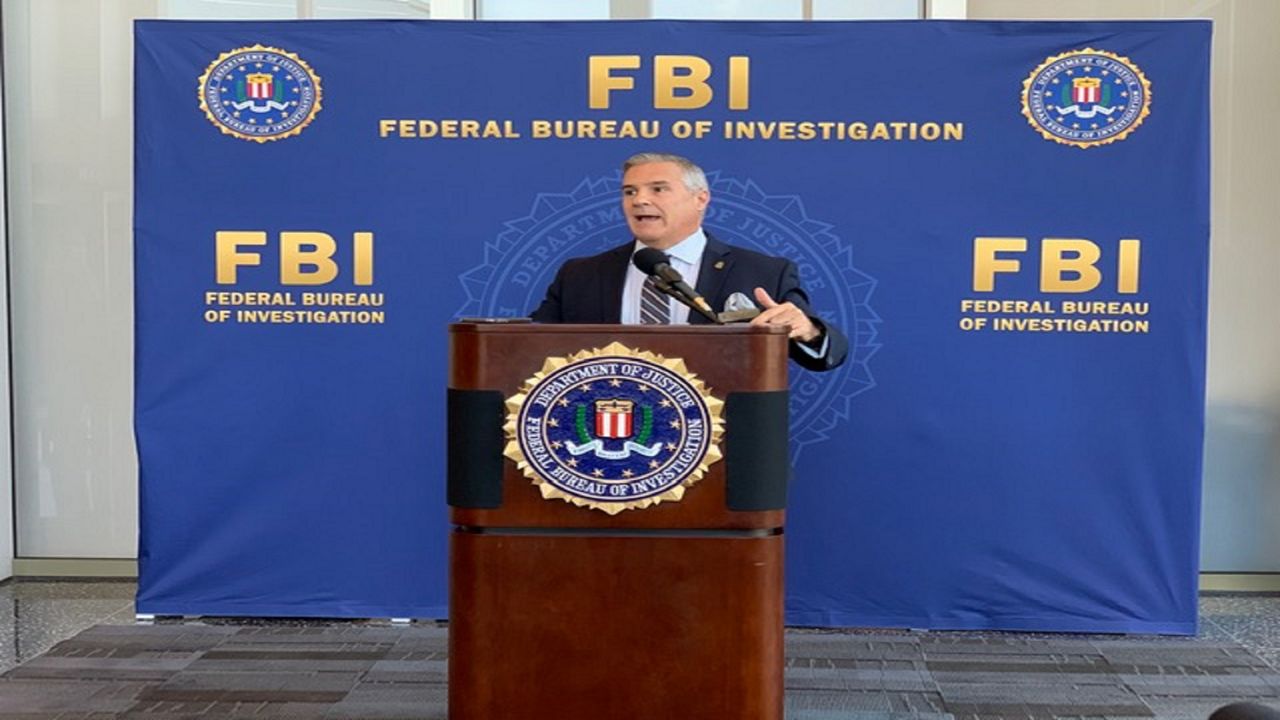CINCINNATI — U.S. Attorney David DeVillers recently announced $1.7M in funding for Hamilton County from the Department’s Office of Justice Programs in an effort to combat and prevent violent crime.
What You Need To Know
- Hamilton County was awarded a $700,000 Strategies for Policing Innovation grant
- The county also received $1 million through the Bureau of Justice Assistance’s Community-Based Crime Reduction grant
- Awards are part of more than $458 million in funding nationwide
The county was awarded two grants each with a unique purpose.
Hamilton County received a $1 million from the Bureau of Justice Assistance’s Community-Based Crime Reduction grant in order to leverage community expertise, in an effort to focus enforcement efforts on crime “hot spots” and generate a long-term impact to reduce crime.
The county was also awarded $700,000 through the Bureau of Justice Assistance’s Strategies for Policing Innovation grant, which aims to give researchers and analysts the tools to create innovative and evidence-based strategies, like data and statistical analyses, to tackle chronic crime.
“(These) grants will bolster the work we already have underway in Cincinnati to hold armed and violent offenders accountable,” DeVillers said.
The FBI’s Uniform Crime Reporting (UCR) database — which is reported by each law enforcement agency voluntarily and may not be all encompassing for Hamilton County — indicated that in the category of violent crime, as reported by the Hamilton County Sheriff’s Office, there were 176 cases in 2019, which increased from 2018, when the sheriff’s office reported 168 violent crimes to the FBI. The Cincinnati Police Department reported 2,824 violent crime cases in 2019 and 2,852 in 2018 to the FBI’s UCR.
The grants are important for the community because policing is changing, said Akshata Kumavat, intelligence operations manager for the Hamilton County Sheriff’s Office’s Intelligence Unit.
"We can no longer apply the standard reactive model of policing where we simply address calls for service and attend incidents. There is invaluable amount of insight that data and proactive threat assessment can give us. It is time that we take advantage of the resources out there meant to do exactly this,” said Kumavat, who focuses on collecting, collating and analyzing crime data, prepares strategies for problem-solving both strategically and tactically, assists in investigations, and advises on technical and operational matters pertaining to crime and intelligence operations.
"Our county needs proactive responses by understanding factors that drive crime rather than treating the symptoms of crime so that we can focus our effort to eliminate the problem at the root. Data analysis is only a tool; however, it is the strategy that makes this tool more successful. Thus, both grants go hand in hand to facilitate our commitment in providing deserving service to the county and its community,” she continued.
Kumavat said that they applied for each grant — Strategies in Policing Innovation (SPI) and Community-Based Crime Reduction (CBCR) — with specific goals in mind.
"We applied for SPI because we recognize the need for data-driven approaches to inform us better about emerging crime and threats within our county,” she said. "We also need data to conduct proper statistical analyses as well as enable proper communication for information sharing within the agency."
The SPI grant, Kumavat said, will allow the sheriff’s office to acquire the technology, such as a records management system, that can aid querying and retrieving, as well as appropriate handling of data. This is "essential and crucial” to their overall mission of applying sustainable practices to policing, she said.
"The second grant is an extremely important one from the community standpoint. The grant focuses on reducing crime through community and problem-oriented policing. We wanted to use this approach in the area where there were highest crime numbers,” Kumavat said.
The funding, she said is vital, especially for specific areas within the county that have higher rates of violent crime.
"We have 12 jurisdictions, each with its own unique community issues. The purpose of these grants is to properly identify crime problems and address them,” Kumavat said. "There are parts of the county that show an upward trend in violent and serious property crime. There are several 'hot spots' that need problem-solving type of policing. Our intention with these grants is to focus on these areas of the county."
For Hamilton County, Kumavat surmised from the data that was collected and measured by the sheriff’s office, that “hot spot” was Lincoln Heights — specifically gun violence.
The CBCR grant funding, she said, will be used to analyze, identify and predict crime, and, in turn, potentially prevent or reduce crime in the Lincoln Heights community.
In partnership with the village of Lincoln Heights, the Hamilton County Sheriff’s Office is also partnering with the University of Cincinnati’s Institute of Crime Science to assist with planning, strategizing and executing the activities planned under this grant to foster stronger, better and healthier relationships with the community of Lincoln Heights, Kumavat said.
"Overall, we hope to build trust and enhance community cooperation in helping us to protect them. While we are already in the practice of using community-oriented policing, it will achieve more through the support of data-driven, research-based and evidence-based strategies,” she said.
Lincoln Heights village council member, Daronce Daniels, hopes what will arise from the discussions and the grant from the county is a conversation with residents who want to make an impact in the community.
"I believe community policing is training the residents who live in the community, who have an interest in protecting the community,” he said. "That is true community-based policing.”
On Dec. 12, the Hamilton County Sheriff’s Office will be in Lincoln Heights talk to residents about community policing and engagement.
The awards granted throughout Ohio, including in Hamilton County, pertaining to crime and crime prevention, are part of more than $458 million in grants awarded by the Department’s Office of Justice Programs nationwide to support of law enforcement efforts, according to the U.S. Attorney’s office.







